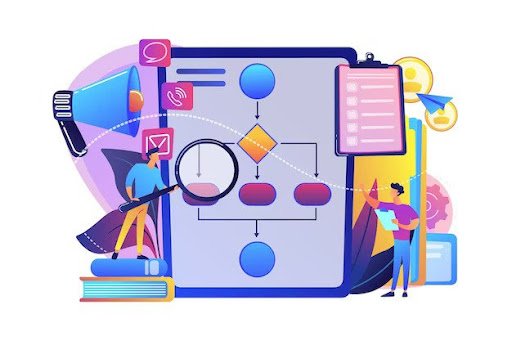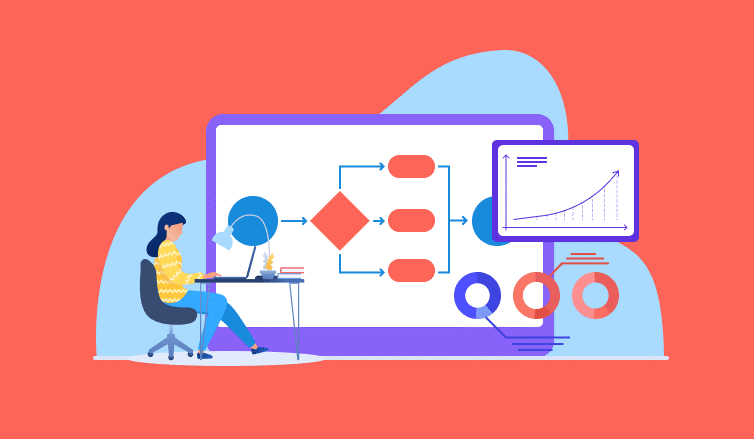Integrating Smart Classroom and LMS to Ensure Seamless Learning
In the fast-paced world of education, technology continues to play a pivotal role in transforming traditional classrooms into dynamic learning environments. One of the most significant advancements in this regard is the integration of Smart Classrooms and Learning Management Systems (LMS). These innovations are reshaping the educational landscape, offering educators and students unparalleled opportunities for enhanced teaching and learning experiences.
The Smart Classroom: A Digital Oasis for Learning
Smart Classrooms are the contemporary response to traditional brick-and-mortar classrooms. These tech-infused spaces leverage digital tools and resources to create a more interactive and engaging learning experience. With features like interactive whiteboards, high-speed internet connectivity, and multimedia projectors, they foster a collaborative and immersive atmosphere that caters to diverse learning styles.
Here’s how tech-induced classrooms are revolutionising education:
- Engagement through Interactivity: Tech-enabled classrooms enable educators to make lessons more interactive. Interactive whiteboards allow teachers to annotate lessons, showcase multimedia content, and even involve students in real-time problem-solving. This level of engagement promotes active participation and deeper understanding of the subject matter.
- Personalised Learning: It empowers teachers to cater to individual learning needs. Adaptive learning software, which can be integrated into the Smart Classroom, assesses each student’s progress and adjusts the curriculum accordingly. This customization ensures that no student is left behind, while advanced learners can be challenged at their own pace.
- Access to Digital Resources: With a tech-enabled classroom, access to a vast array of digital resources is at the fingertips of both teachers and students. Online textbooks, educational apps, and e-learning platforms can be seamlessly integrated into the learning process, making it easier to explore and understand complex topics.
- Enhanced Collaboration: It encourages collaboration among students. Group projects can be facilitated through digital platforms, and students can easily share their work with peers. This not only fosters collaboration but also readies students for the collaborative aspects of today’s professional environments.
- Efficient Management: Administrative tasks become more streamlined in a tech-enabled Classroom. Attendance tracking, grading, and communication with students and parents can be managed through integrated Learning Management Systems.
Learning Management System (LMS): The Backbone of Smart Classrooms
A Learning Management System (LMS) is a cornerstone of modern education technology. It’s a software platform designed to administer, document, track, and deliver educational content and resources. When integrated with a Smart Classroom, it becomes the backbone that supports the entire educational ecosystem.
Here’s how an LMS complements the Smart Classroom:
- Content Management: LMS platforms allow educators to upload and organise course content efficiently. This includes lecture notes, assignments, quizzes, and multimedia resources. Students can access these materials anytime, anywhere, fostering a culture of continuous learning.
- Assessment and Evaluation: LMS systems facilitate the creation and administration of assessments. From quizzes and exams to peer evaluations and surveys, these tools simplify the grading process, offering educators insights into student performance.
- Communication Hub: LMS platforms serve as a centralised hub for communication. Teachers can easily send announcements, messages, and notifications to students and parents. This ensures everyone is well-informed about class updates, deadlines, and important events.
- Progress Tracking: An LMS enables students to track their own progress. They can view grades, review feedback, and monitor their performance over time. This fosters a sense of responsibility and accountability for their own learning journey.
- Analytics for Continuous Improvement: Learning Management Systems provide valuable data analytics. Educators can use this data to identify areas where students may be struggling and adjust their teaching strategies accordingly. This data-driven approach helps in continuous improvement of the educational process.
The Symbiotic Relationship Between Smart Classrooms & Learning Management System
The integration of tech-induced classrooms and Learning Management System creates a symbiotic relationship that is transforming education. Smart Classrooms provide the engaging and interactive environment necessary for effective teaching, while the LMS adds the necessary structure, organisation, and data-driven insights to enhance the learning experience.
For instance, when a teacher uses the interactive whiteboard in a tech-enabled classroom to deliver a lesson, the LMS can automatically record attendance. As students engage with the content, their responses and interactions are logged in the system. The LMS also provides a platform for students to submit assignments and for teachers to grade and provide feedback. All of this data is seamlessly integrated into the LMS, allowing educators to gain a holistic view of each student’s progress.
Furthermore, the LMS enables students to access resources and review lessons outside of the classroom, promoting self-directed learning. This flexibility is especially important in today’s digital age, where learning can take place at any time and from any location.
Conclusion
In the field of education, technology is transforming traditional classrooms into vibrant learning environments by means of tech-induced classrooms and Learning Management Systems (LMS). Tech-enabled classrooms, equipped with interactive whiteboards, high-speed internet access, and multimedia projectors, facilitate engagement and customization, empowering educators to craft immersive and individually tailored learning experiences.
LMS platforms serve as the foundation, providing capabilities for managing content, assessment, communication, and progress tracking. The integration of Smart Classrooms and LMS establishes a mutually beneficial relationship that combines interactive teaching with structured organisation, data-driven insights, and the adaptability for students to learn at their convenience, thereby shaping the future of education.






